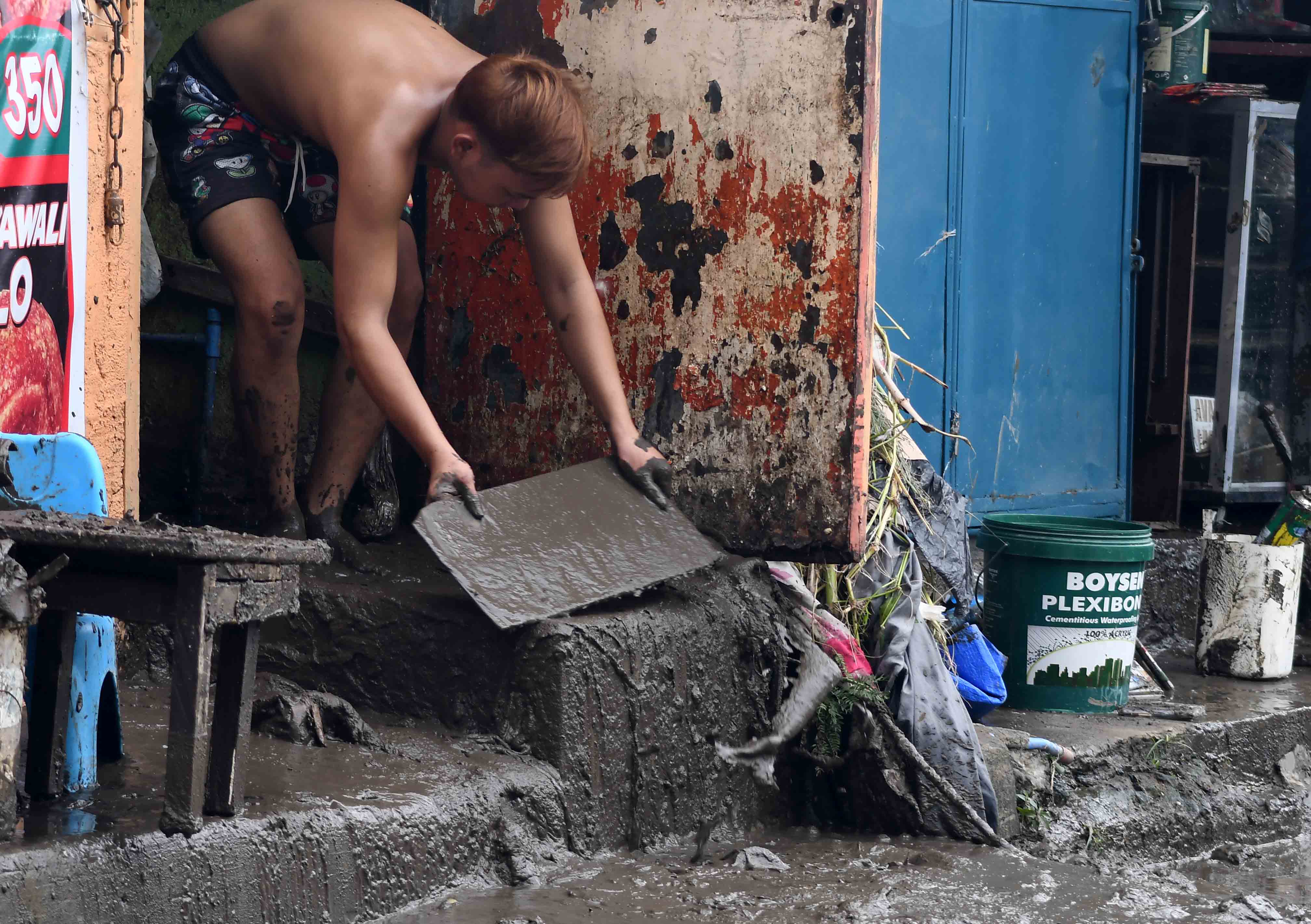Horror as 'Kristine' death toll tops 90; damage estimated at P2.2 billion

The reported death toll due to Severe Tropical Storm “Kristine” further increased to 90 while the combined damage to agriculture and infrastructure reached P2.2 billion, the Office of Civil Defense (OCD) said on Sunday, Oct. 27.
However, the situation is a little tricky as OCD Administrator, Undersecretary Ariel Nepomuceno said that only nine deaths have been validated so far while the others are still being confirmed by the Department of the Interior and Local Government’s Management of the Dead and Missing (DILG-MDM) if they are indeed related to the storm.
“Iva-validate pa ho ‘yan. Ibig sabihin, hinihingi pa namin ang official report from DILG na talagang sadyang may kinalaman sa nangyaring bagyo (These will still be validated. That means, we are still awaiting the report from the DILG which will confirm that [the fatalities] are really related to the storm),” Nepomuceno said in a radio interview over dzBB.
The validated deaths are all recorded in Bicol Region (Region 5) which bore the brunt of Kristine.
The number is feared to further rise as Nepomuceno said 36 individuals were also missing and 71 were injured.
Most of the casualties were due to landslides as the soil became saturated due to non-stop rains that lasted for days and flooding. In Talisay City, Batangas alone, at least 19 people were buried alive due to a landslide caused by Kristine. In other areas, floodwaters have reached the second floor of many houses.
“Marami talaga sa landslide lalo na ‘yung nakita natin sa Talisay. Sila ang malaking casualty sa landslide. Mayroon din mga nalunod at ilang mga kababayan natin na nagpumilit mangisda (Many casualties were due to landslides especially the one in Talisay. The landslide there had a big chunk in our casualties. There are some who also drowned and others who insisted on going into fishing ventures [despite the bad weather]),” Nepomuceno said.
At present, a total of 5,784,298 individuals or 1,415,438 families have already been affected by the storm in 16 of 17 regions across the country. Of this, around 400,000 individuals were seeking shelter in evacuation centers or other people’s homes.
There were 642 flooded areas in Ilocos Region (Region 1), Cagayan Valley (Region 2), Central Luzon (Region 3), Calabarzon (Region 4A), Mimaropa (Region 4B), Bicol Region (Region 5), Western Visayas (Region 6), Eastern Visayas (Region 8), Zamboanga Peninsula (Region 9), Soccsksargen (Region 12), Caraga (Region 13), Bangsamoro Autonomous Region in Muslim Mindanao (BARMM), and National Capital Region (NCR), making humanitarian assistance and disaster relief (HADR) operations difficult.
There were 218 roads and bridges that were also not passable to the public since they were either flooded or damaged.
More than 25,000 houses were also partially damaged while 2,000 more were completely destroyed.
The Philippine Coast Guard (PCG) said that it monitored no more stranded passenger or vessels in all ports nationwide.
"All shipping and fishing operations have resumed their normal operations," the PCG noted.
Agri, infra damage
The estimated cost of damage to agriculture was P 1,432,229,305.62 after 31,670.26 hectares of crops and many livestock, poultry and fisheries were destroyed, affecting 35,918 farmers and fisherfolk.
Meanwhile, 207 infrastructure projects were damaged resulting to a loss amounting to P825,130,698.3. These include damaged roads, bridges, flood control, schools, health facilities and other government and utility services facilities.
A total of 158 cities and municipalities in Regions 1, Calabarzon, 5, 8, 12, Cordillera Administrative Region (CAR), and NCR were also placed under a state of calamity due to the extent of damage caused by Kristine.
The OCD said that P562 million worth of assistance have been given to more than 142,000 affected families.
"Marami pang lugar na mahirap puntahan, kinakailangan pa magbangka o rubber boats, hindi pa kaya ng regular na land vehicle. Pero napupuntahan naman natin, hindi lang ganoon kabilis dahil hindi pa kaya ng sasakyan (We find it hard to reach many areas since we need to use boats or rubber boats, we cannot reach them via land vehicle. But we are reaching them albeit slowly since the land vehicles cannot pass through)," Nepomuceno said.